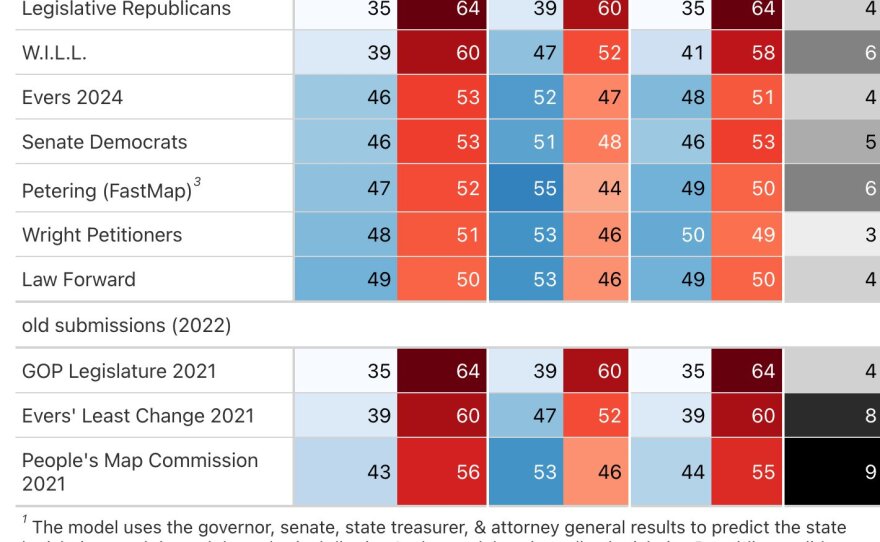Late last year, the Wisconsin Supreme Court overturned the state's current legislative maps and ordered that new district maps must be drawn. Seven district maps were submitted, but only six will be considered by the court.
The seventh map was drawn by Matt Petering, an associate professor of industrial and manufacturing engineering at UW-Milwaukee and owner of District Solutions — a company based around his map-making algorithm, which he believes is the best way to get fair maps in Wisconsin.
"I'm not proposing that all of humanity subordinate itself to an algorithm," says Petering. "What I'm proposing [is for] humans to be able to select from the best possible options and the algorithm can actually create many options. And so, that's a really neat thing about an algorithm."
He believes his algorithm has the advantage of allowing people to select for the specific criteria they want in a map. For example, Petering wanted to create a map with politically competitive districts, so the algorithm designed maps that focus on competition.
"My map did have significantly more competitive districts than the other maps by quite a bit. We had about 30% of the districts in both the Assembly and the Senate that were highly competitive. And I think the next best map might have been in the low 20s for the percent of districts that were competitive," says Petering.
"My map had the lowest efficiency gap by quite a bit. It was the most politically neutral. It did have the nicest shapes for the districts by far. It also had the most number of competitive districts by quite a bit." - Matt Petering
The Wisconsin Supreme Court decided that Petering's map could not be considered, since he was not a party in the case. For Petering, this was difficult news, both because of the hard work he's put into his algorithm and because he believes his map is the best option for the State of Wisconsin
He explains, "My map had the lowest efficiency gap by quite a bit. It was the most politically neutral. It did have the nicest shapes for the districts by far. It also had the most number of competitive districts by quite a bit ... I mean we're really missing out on quite a bit because my map was doing very well."
Although Petering's map will not be in the running, that doesn't mean any of the other six maps will be chosen, either. The Wisconsin legislature and Gov. Evers could pass a different map altogether. Petering also notes that if the Wisconsin Supreme Court is dissatisfied with the options it's been presented, it could create a different map.
_








